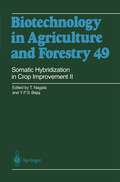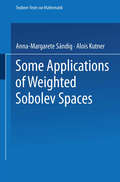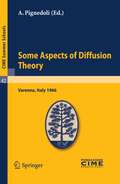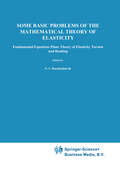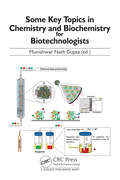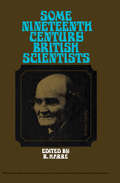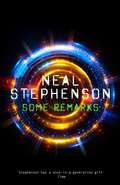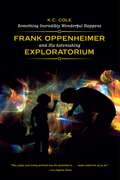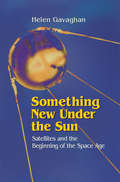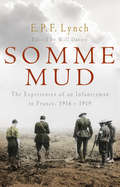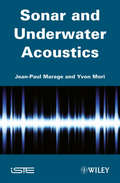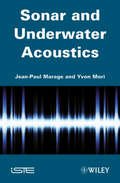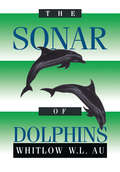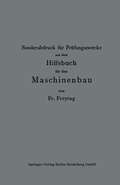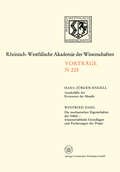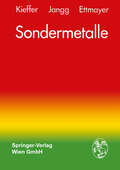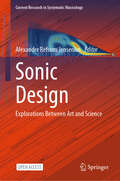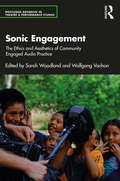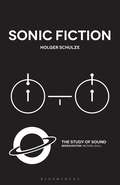- Table View
- List View
Somatic Hybridization in Crop Improvement II (Biotechnology in Agriculture and Forestry #49)
by Toshiyuki Nagata Y. P. S. BajajThis richly illustrated volume describes how somatic hybrids can contribute to the improvement of crops. It comprises 24 chapters dealing with interspecific and intergeneric somatic hybridization and cybridization, providing valuable tools for plant breeders.
Some Applications of Weighted Sobolev Spaces (Teubner-Texte zur Mathematik #100)
by Anna-Margarete SändigSome Aspects of Diffusion Theory: Lectures given at a Summer School of the Centro Internazionale Matematico Estivo (C.I.M.E.) held in Varenna (Como), Italy, September 9-27,1966 (C.I.M.E. Summer Schools #42)
by A. PignedoliV.C.A. Ferraro: Diffusion of ions in a plasma with applications to the ionosphere.- P.C. Kendall: On the diffusion in the atmosphere and ionosphere.-F. Henin: Kinetic equations and Brownian motion.- T. Kahan:Théorie des réacteurs nucléaires: méthodes de résolution perturbationnelles, interactives et variationnelles.- C. Cattaneo: Sulla conduzione del calore.- C. Agostinelli: Formule di Green per la diffusione del campo magnetico in un fluido elettricamente conduttore.- A. Pignedoli: Transformational methods applied to some one-dimensional problems concerning the equations of the neutron transport theory.- A. Pignedoli: On the rigorous analysis of the problem of neutron transport in a slab geometry and on some other results.- G. Sestini: Principi di massimo per le soluzioni di equazioni paraboliche.
Some Basic Problems of the Mathematical Theory of Elasticity
by N.I. MuskhelishviliTO THE FIRST ENGLISH EDITION. In preparing this translation, I have taken the liberty of including footnotes in the main text or inserting them in small type at the appropriate places. I have also corrected minor misprints without special mention .. The Chapters and Sections of the original text have been called Parts and Chapters respectively, where the latter have been numbered consecutively. The subject index was not contained in the Russian original and the authors' index represents an extension of the original list of references. In this way the reader should be able to find quickly the pages on which anyone reference is discussed. The transliteration problem has been overcome by printing the names of Russian authors and journals also in Russian type. While preparing this translation in the first place for my own informa tion, the knowledge that it would also become accessible to a large circle of readers has made the effort doubly worthwhile. I feel sure that the reader will share with me in my admiration for the simplicity and lucidity of presentation.
Some Key Topics in Chemistry and Biochemistry for Biotechnologists
by Munishwar Nath GuptaThe book is aimed at providing an exposure to some important topics which are generally not covered adequately in formal courses in biotechnology. It informs the readers about: How micro-fluidics are proving useful in enzyme kinetics. Chemi-proteomics; combinatorial chemistry and high-throughput screening in the context of drug discovery. How enzymes can be used with gaseous substrates? How to source more robust enzymes from marine resources for diverse applications? Why some nano-materials can be chiral? Synthesis of diverse quantum dots as powerful fluorescent probes in biology. How basics of surface chemistry and immunology are vital in dealing with endemics/pandemics like Covid-19.
Some Key Topics in Chemistry and Biochemistry for Biotechnologists
The book is aimed at providing an exposure to some important topics which are generally not covered adequately in formal courses in biotechnology. It informs the readers about: How micro-fluidics are proving useful in enzyme kinetics. Chemi-proteomics; combinatorial chemistry and high-throughput screening in the context of drug discovery. How enzymes can be used with gaseous substrates? How to source more robust enzymes from marine resources for diverse applications? Why some nano-materials can be chiral? Synthesis of diverse quantum dots as powerful fluorescent probes in biology. How basics of surface chemistry and immunology are vital in dealing with endemics/pandemics like Covid-19.
Some Nineteenth Century British Scientists: The Commonwealth and International Library: Science and Society
by R. HarréSome Nineteenth Century British Scientists presents the biographies of eight British scientists who represent the state of science in the second half of the Victorian era: Charles Wyville Thomson, James Murray, Arthur Cayley, Francis Galton, William Thomson, Lord Kelvin, Norman Lockyer, Sidney Gilchrist Thomas, and William Ramsay. This book is comprised of seven chapters and begins by focusing on the contributions and achievements of Charles Wyville Thomson in the fields of natural history, marine biology, and deep-sea exploration, especially his expedition aboard H.M.S. Challenger, and of James Murray in oceanography. Subsequent chapters discuss the works of Arthur Cayley (mathematics), Francis Galton (exploration, anthropology, and eugenics), and William Thomson, Lord Kelvin (mathematical physics). The achievements of Norman Lockyer (astrophysics), Sidney Gilchrist Thomas (inventor of the Thomas-Gilchrist process for eliminating phosphorus in the Bessemer converter), and William Ramsay (chemistry) are also considered. This monograph will be a useful resource for students and scientists alike.
Some Remarks: Essays And Other Writing
by Neal StephensonIn this definitive collection of Stephenson's writings, journalism and meditations, the great American polymath puts the 20th Century - mathematics, cryptography, philosophy, currency, and the history of science and technology- under his eclectic and unflinching gaze.One of the most talented and creative authors working today, Neal Stephenson is renowned for his exceptional novels - works colossal in vision and mind-boggling in complexity. Exploring and blending a diversity of topics, including technology, economics, history, science, pop culture, and philosophy, his books are the product of a keen and adventurous intellect. Not surprisingly, Stephenson is regularly asked to contribute articles, lectures, and essays to numerous outlets, from major newspapers and cutting edge magazines to college symposia. This remarkable collection brings together previously published short writings, both fiction and nonfiction as well as a new essay (and an extremely short story) created specifically for this volume. Stephenson ponders a wealth of subjects, from movies and politics to David Foster Wallace and the Midwestern American College Town; video games to classics-based sci-fi; how geekdom has become cool and how science fiction has become mainstream (whether people admit it or not); the future of publishing and the origins of his novels. By turns amusing and profound, critical and celebratory, yet always entertaining, Some Remarks offers a fascinating look into the prismatic mind of this extraordinary writer.
Something Incredibly Wonderful Happens: Frank Oppenheimer and His Astonishing Exploratorium
by K. C. ColeHow do we reclaim our innate enchantment with the world? And how can we turn our natural curiosity into a deep, abiding love for knowledge? Frank Oppenheimer, the younger brother of the physicist J. Robert Oppenheimer, was captivated by these questions, and used his own intellectual inquisitiveness to found the Exploratorium, a powerfully influential museum of human awareness in San Francisco, that encourages play, creativity, and discovery—all in the name of understanding. In this elegant biography, K. C. Cole investigates the man behind the museum with sharp insight and deep sympathy. The Oppenheimers were a family with great wealth and education, and Frank, like his older brother, pursued a career in physics. But while Robert was unceasingly ambitious, and eventually came to be known for his work on the atomic bomb, Frank’s path as a scientist was much less conventional. His brief fling with the Communist Party cost him his position at the University of Minnesota, and he subsequently spent a decade ranching in Colorado before returning to teaching. Once back in the lab, however, Frank found himself moved to create something to make the world meaningful after the bombing of Hiroshima and Nagasaki. He was inspired by European science museums, and he developed a dream of teaching Americans about science through participatory museums. Thus was born the magical world of the Exploratorium, forever revolutionizing not only the way we experience museums, but also science education for years to come. Cole has brought this charismatic and dynamic figure to life with vibrant prose and rich insight into Oppenheimer as both a scientist and an individual.
Something Incredibly Wonderful Happens: Frank Oppenheimer and His Astonishing Exploratorium
by K. C. ColeHow do we reclaim our innate enchantment with the world? And how can we turn our natural curiosity into a deep, abiding love for knowledge? Frank Oppenheimer, the younger brother of the physicist J. Robert Oppenheimer, was captivated by these questions, and used his own intellectual inquisitiveness to found the Exploratorium, a powerfully influential museum of human awareness in San Francisco, that encourages play, creativity, and discovery—all in the name of understanding. In this elegant biography, K. C. Cole investigates the man behind the museum with sharp insight and deep sympathy. The Oppenheimers were a family with great wealth and education, and Frank, like his older brother, pursued a career in physics. But while Robert was unceasingly ambitious, and eventually came to be known for his work on the atomic bomb, Frank’s path as a scientist was much less conventional. His brief fling with the Communist Party cost him his position at the University of Minnesota, and he subsequently spent a decade ranching in Colorado before returning to teaching. Once back in the lab, however, Frank found himself moved to create something to make the world meaningful after the bombing of Hiroshima and Nagasaki. He was inspired by European science museums, and he developed a dream of teaching Americans about science through participatory museums. Thus was born the magical world of the Exploratorium, forever revolutionizing not only the way we experience museums, but also science education for years to come. Cole has brought this charismatic and dynamic figure to life with vibrant prose and rich insight into Oppenheimer as both a scientist and an individual.
Something Incredibly Wonderful Happens: Frank Oppenheimer and His Astonishing Exploratorium
by K. C. ColeHow do we reclaim our innate enchantment with the world? And how can we turn our natural curiosity into a deep, abiding love for knowledge? Frank Oppenheimer, the younger brother of the physicist J. Robert Oppenheimer, was captivated by these questions, and used his own intellectual inquisitiveness to found the Exploratorium, a powerfully influential museum of human awareness in San Francisco, that encourages play, creativity, and discovery—all in the name of understanding. In this elegant biography, K. C. Cole investigates the man behind the museum with sharp insight and deep sympathy. The Oppenheimers were a family with great wealth and education, and Frank, like his older brother, pursued a career in physics. But while Robert was unceasingly ambitious, and eventually came to be known for his work on the atomic bomb, Frank’s path as a scientist was much less conventional. His brief fling with the Communist Party cost him his position at the University of Minnesota, and he subsequently spent a decade ranching in Colorado before returning to teaching. Once back in the lab, however, Frank found himself moved to create something to make the world meaningful after the bombing of Hiroshima and Nagasaki. He was inspired by European science museums, and he developed a dream of teaching Americans about science through participatory museums. Thus was born the magical world of the Exploratorium, forever revolutionizing not only the way we experience museums, but also science education for years to come. Cole has brought this charismatic and dynamic figure to life with vibrant prose and rich insight into Oppenheimer as both a scientist and an individual.
Something Incredibly Wonderful Happens: Frank Oppenheimer and His Astonishing Exploratorium
by K. C. ColeHow do we reclaim our innate enchantment with the world? And how can we turn our natural curiosity into a deep, abiding love for knowledge? Frank Oppenheimer, the younger brother of the physicist J. Robert Oppenheimer, was captivated by these questions, and used his own intellectual inquisitiveness to found the Exploratorium, a powerfully influential museum of human awareness in San Francisco, that encourages play, creativity, and discovery—all in the name of understanding. In this elegant biography, K. C. Cole investigates the man behind the museum with sharp insight and deep sympathy. The Oppenheimers were a family with great wealth and education, and Frank, like his older brother, pursued a career in physics. But while Robert was unceasingly ambitious, and eventually came to be known for his work on the atomic bomb, Frank’s path as a scientist was much less conventional. His brief fling with the Communist Party cost him his position at the University of Minnesota, and he subsequently spent a decade ranching in Colorado before returning to teaching. Once back in the lab, however, Frank found himself moved to create something to make the world meaningful after the bombing of Hiroshima and Nagasaki. He was inspired by European science museums, and he developed a dream of teaching Americans about science through participatory museums. Thus was born the magical world of the Exploratorium, forever revolutionizing not only the way we experience museums, but also science education for years to come. Cole has brought this charismatic and dynamic figure to life with vibrant prose and rich insight into Oppenheimer as both a scientist and an individual.
Something New Under the Sun: Satellites and the Beginning of the Space Age
by Helen GavaghanIn this, the first history of artificial satellites and their uses, Helen Gavaghan shows how the idea of putting an object in orbit around the earth changed from science fiction to indispensable technology in the twinkling of an eye. Focusing on three major areas of development - navigational satellites, communications, and weather observation and forecasting - Gavaghan tells the remarkable inside story of how obscure men and women, often laboring under strict secrecy, made satellite technology possible."...a gripping read." -NEW SCIENTIST
Somme Mud: The War Experiences Of An Australian Infantryman In France 1916-1919
by E P Lynch'It's the end of the 1916 winter and the conditions are almost unbelievable. We live in a world of Somme mud. We sleep in it, work in it, fight in it, wade in it and many of us die in it. We see it, feel it, eat it and curse it, but we can't escape it, not even by dying...'Edward Lynch enlisted when he was just 18 - one of thousands of fresh-faced men who were proudly waved off by the crowds as they embarked for France. It was 1916 and the majority had no idea of the reality of the Somme trenches, of the traumatised soldiers they would encounter there, of the innumerable, awful contradictions of war. Private Lynch was one of those who survived, and on his return home, wrote Somme Mud in pencil in over 20 school exercise books, perhaps in the hope of coming to terms with all that he had witnessed there? Written from the perspective of an ordinary 'Tommy' and told with dignity, candour and surprising wit, Somme Mud is a testament to the human spirit: for out of the mud that threatened to suck out a man's soul rises a compelling story of humanity and friendship. For all who are marking the centenary of the Great War, it is a rare and precious find.
Sonar and Underwater Acoustics
by Jean-Paul Marage Yvon MoriSonar and Underwater Acoustics brings together all the concepts necessary for designers and users of sonar systems. Unlike other books on this subject, which are often too specialized, this book is accessible to a wider audience. The first part focuses on the acoustic environment, antenna structures, and electric acoustic interface. The latter provides knowledge required to design, as well as the development and implementation of chain processes for an active sonar from the conditioning input to output processing. The reader will find a comprehensive range of all problems encountered in underwater acoustics for a sonar application, from physical phenomena governing the environment and the corresponding constraints, through to the technical definition of transducers and antennas, and the types of signal processing involved. In one section, measures in underwater acoustics are also proposed.
Sonar and Underwater Acoustics
by Jean-Paul Marage Yvon MoriSonar and Underwater Acoustics brings together all the concepts necessary for designers and users of sonar systems. Unlike other books on this subject, which are often too specialized, this book is accessible to a wider audience. The first part focuses on the acoustic environment, antenna structures, and electric acoustic interface. The latter provides knowledge required to design, as well as the development and implementation of chain processes for an active sonar from the conditioning input to output processing. The reader will find a comprehensive range of all problems encountered in underwater acoustics for a sonar application, from physical phenomena governing the environment and the corresponding constraints, through to the technical definition of transducers and antennas, and the types of signal processing involved. In one section, measures in underwater acoustics are also proposed.
The Sonar of Dolphins
by Whitlow W.L. AuThe extraordinary ability of dolphins to echolocate has fascinated scientists and the public since its discovery in the late 1950's. This is the first book to summarize modern research in this area, and presents a broad synthesis of this very interdisciplinary subject. The author is an internationally-recognized expert on dolphin sonar and is thus in a unique position to bring together research on the physiological, mathematical and engineering aspects of the subject. Of interest to auditory researchers, electrical engineers, acoustical physicists, and mammalian physiologists.
Sonderfälle der Korrosion der Metalle. Die mechanischen Eigenschaften der Stähle — wissenschaftliche Grundlagen und Forderungen der Praxis
by Hans-Jürgen EngellSonic Design: Explorations Between Art and Science (Current Research in Systematic Musicology #12)
by Alexander Refsum JenseniusThis open access book offers a historical context and an overview of the field's current artistic and scientific research. Sonic design includes the construction and performance of acoustic instruments but also recording, editing, mixing, and synthesizing sounds using analog and digital electronic devices. This book explores sonic design from the perspectives of music theory, music perception, embodied cognition, phenomenology, soundscape studies, acoustics, new interfaces for musical expression, sound and music computing, and music information retrieval. The chapters are selected contributions from an international seminar organized to celebrate the achievements of Professor Rolf Inge Godøy at the University of Oslo. As a composer, researcher, teacher, and supervisor, Professor Godøy has been central in developing a holistic approach to sonic design, from theory to practice. This book offers a comprehensive overview of the field's current state, making it essential reading for students, practitioners, and researchers across a wide range of disciplines.
Sonic Engagement: The Ethics and Aesthetics of Community Engaged Audio Practice (Routledge Advances in Theatre & Performance Studies)
by Sarah Woodland Wolfgang VachonSonic Engagement examines the relationship between community engaged participatory arts and the cultural turn towards audio, sound, and listening that has been referred to as the 'sonic turn'. This edited collection investigates the use of sound and audio production in community engaged participatory arts practice and research. The popularity of podcast and audio drama, combined with the accessibility and portability of affordable field recording and home studio equipment, makes audio a compelling mode of participatory creative practice. This book maps existing projects occurring globally through a series of case study chapters that exemplify community engaged creative audio practice. The studies focus on audio and sound-based arts practices that are undertaken by artists and arts-led researchers in collaboration with (and from within) communities and groups. These practices include—applied audio drama, community engaged podcasting, sound and verbatim theatre, participatory sound art, community-led acoustic ecology, sound and media walks, digital storytelling, oral history and reminiscence, and radio drama in health and community development. The contributors interrogate the practical, political, and aesthetic potentialities of using sound and audio in community engaged arts practice, as well as its tensions and possibilities as an arts-led participatory research methodology. This book provides the first extensive analysis of what sound and audio brings to participatory, interdisciplinary, arts-led approaches, representing a vital resource for community arts, performance practice, and research in the digital age.
Sonic Engagement: The Ethics and Aesthetics of Community Engaged Audio Practice (Routledge Advances in Theatre & Performance Studies)
by Sarah Woodland Wolfgang VachonSonic Engagement examines the relationship between community engaged participatory arts and the cultural turn towards audio, sound, and listening that has been referred to as the 'sonic turn'. This edited collection investigates the use of sound and audio production in community engaged participatory arts practice and research. The popularity of podcast and audio drama, combined with the accessibility and portability of affordable field recording and home studio equipment, makes audio a compelling mode of participatory creative practice. This book maps existing projects occurring globally through a series of case study chapters that exemplify community engaged creative audio practice. The studies focus on audio and sound-based arts practices that are undertaken by artists and arts-led researchers in collaboration with (and from within) communities and groups. These practices include—applied audio drama, community engaged podcasting, sound and verbatim theatre, participatory sound art, community-led acoustic ecology, sound and media walks, digital storytelling, oral history and reminiscence, and radio drama in health and community development. The contributors interrogate the practical, political, and aesthetic potentialities of using sound and audio in community engaged arts practice, as well as its tensions and possibilities as an arts-led participatory research methodology. This book provides the first extensive analysis of what sound and audio brings to participatory, interdisciplinary, arts-led approaches, representing a vital resource for community arts, performance practice, and research in the digital age.
Sonic Fiction (The Study of Sound)
by Holger SchulzeSonic fiction is everywhere: in conversations about vernacular culture, in music videos, sound art compositions and on record sleeves, in everyday encounters with sonic experiences and in every single piece of writing about sound. Where one can find sounds one will also detect bits of fiction.In 1998 music critic, DJ and video essayist Kodwo Eshun proposed this concept in his book “More Brilliant Than The Sun: Adventures in Sonic Fiction”. Originally, he did so in order to explicate the manifold connections between Afrofuturism and Techno, connecting them to Jazz, Breakbeat and Electronica. His argument, his narrations and his explorative language operations however inspired researchers, artists, and scholars since then. Sonic Fiction became a myth and a mantra, a keyword and a magical spell. This book provides a basic introduction to sonic fiction. In six chapters it explicates the inspirations for and the transformations of this concept; it explores applications and extrapolations in sound art and sonic theory, in musicology, epistemology, in critical and political theory. Sonic fiction is presented in this book as a heuristic for critique and activism.
Sonic Fiction (The Study of Sound)
by Holger SchulzeSonic fiction is everywhere: in conversations about vernacular culture, in music videos, sound art compositions and on record sleeves, in everyday encounters with sonic experiences and in every single piece of writing about sound. Where one can find sounds one will also detect bits of fiction.In 1998 music critic, DJ and video essayist Kodwo Eshun proposed this concept in his book “More Brilliant Than The Sun: Adventures in Sonic Fiction”. Originally, he did so in order to explicate the manifold connections between Afrofuturism and Techno, connecting them to Jazz, Breakbeat and Electronica. His argument, his narrations and his explorative language operations however inspired researchers, artists, and scholars since then. Sonic Fiction became a myth and a mantra, a keyword and a magical spell. This book provides a basic introduction to sonic fiction. In six chapters it explicates the inspirations for and the transformations of this concept; it explores applications and extrapolations in sound art and sonic theory, in musicology, epistemology, in critical and political theory. Sonic fiction is presented in this book as a heuristic for critique and activism.
